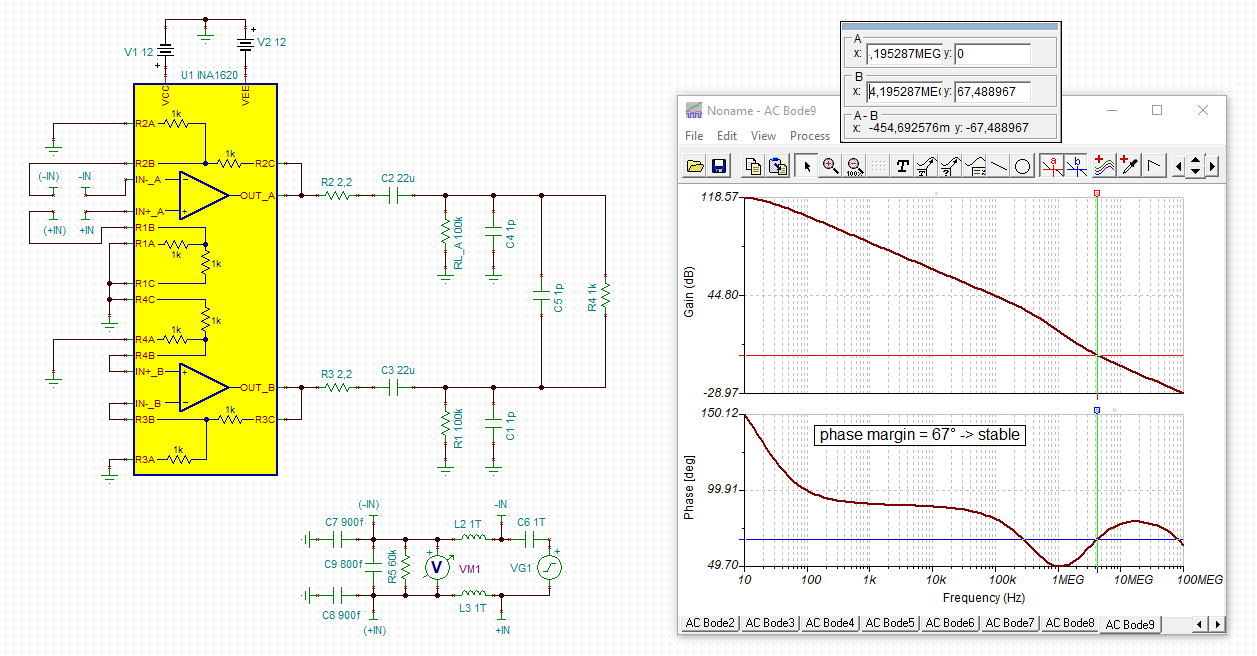I started with an example model using TI TINA with the INA1620, and modified it for circuits that we are considering for driving the reference for a couple of different resolvers. I am primarily interested in the stability of the circuit with various discrete component configurations as loads on the output(s). Some of this is also for my education on the TI TINA tool and how to do stability analysis on various circuits.
Initially I tried to replicate the results of the author, but the Bode Plot is hard to replicate without knowing exactly what the graphs mean. Is the original Bode Plot, the open circuit analysis of a single complete differential amplifier as shown? I was thinking that the inverting and non-inverting portions would have to be analyzed separately, as they would each of different gain-phase margins. Any help on how the original analysis was done and on how to person a stability analysis of our modified circuit would be appreciated sbomal5a_L_ACB_A1.TSC




